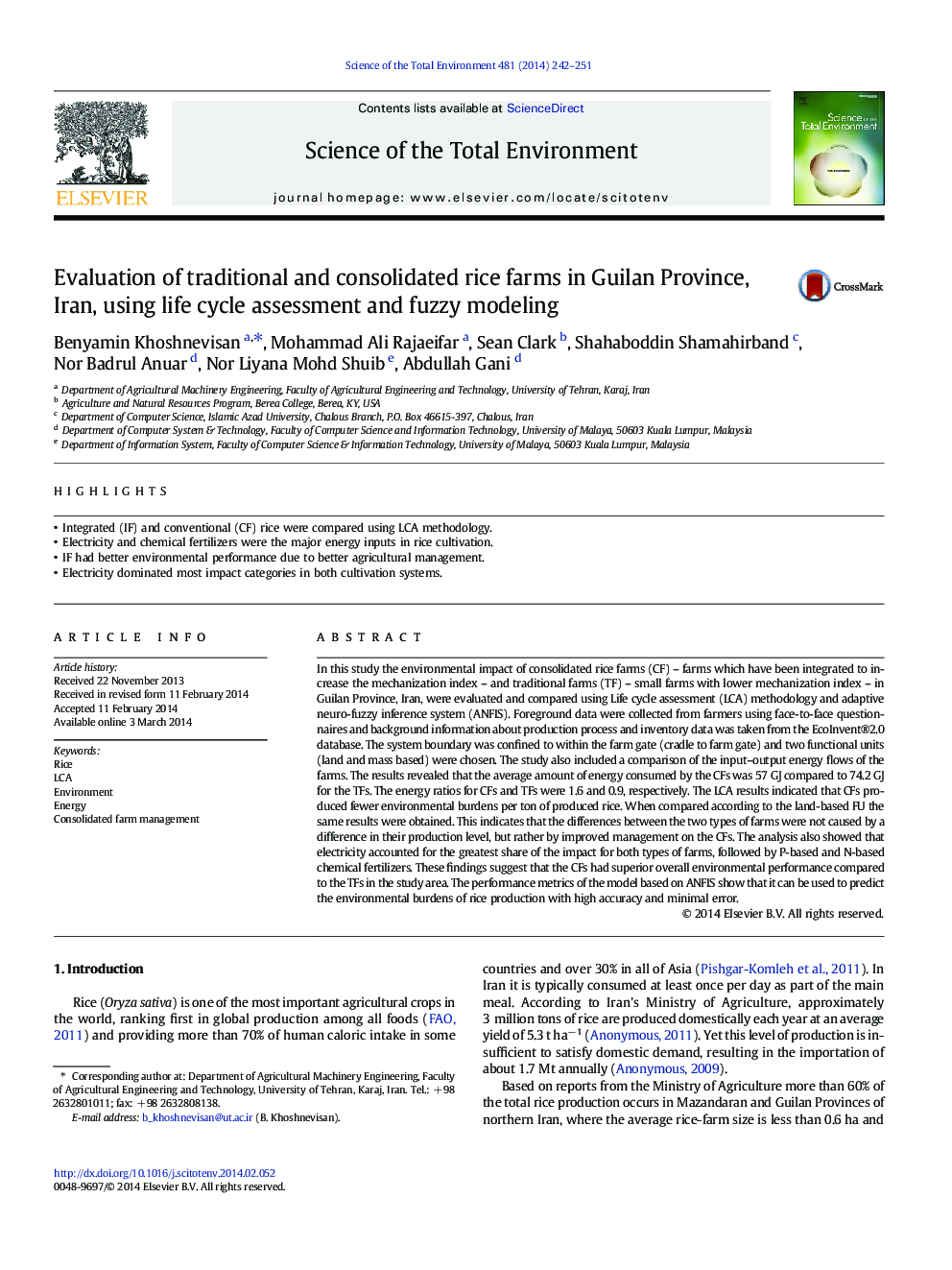| Article ID | Journal | Published Year | Pages | File Type |
|---|---|---|---|---|
| 6330850 | Science of The Total Environment | 2014 | 10 Pages |
Abstract
In this study the environmental impact of consolidated rice farms (CF) - farms which have been integrated to increase the mechanization index - and traditional farms (TF) - small farms with lower mechanization index - in Guilan Province, Iran, were evaluated and compared using Life cycle assessment (LCA) methodology and adaptive neuro-fuzzy inference system (ANFIS). Foreground data were collected from farmers using face-to-face questionnaires and background information about production process and inventory data was taken from the EcoInvent®2.0 database. The system boundary was confined to within the farm gate (cradle to farm gate) and two functional units (land and mass based) were chosen. The study also included a comparison of the input-output energy flows of the farms. The results revealed that the average amount of energy consumed by the CFs was 57Â GJ compared to 74.2Â GJ for the TFs. The energy ratios for CFs and TFs were 1.6 and 0.9, respectively. The LCA results indicated that CFs produced fewer environmental burdens per ton of produced rice. When compared according to the land-based FU the same results were obtained. This indicates that the differences between the two types of farms were not caused by a difference in their production level, but rather by improved management on the CFs. The analysis also showed that electricity accounted for the greatest share of the impact for both types of farms, followed by P-based and N-based chemical fertilizers. These findings suggest that the CFs had superior overall environmental performance compared to the TFs in the study area. The performance metrics of the model based on ANFIS show that it can be used to predict the environmental burdens of rice production with high accuracy and minimal error.
Keywords
Related Topics
Life Sciences
Environmental Science
Environmental Chemistry
Authors
Benyamin Khoshnevisan, Mohammad Ali Rajaeifar, Sean Clark, Shahaboddin Shamahirband, Nor Badrul Anuar, Nor Liyana Mohd Shuib, Abdullah Gani,
